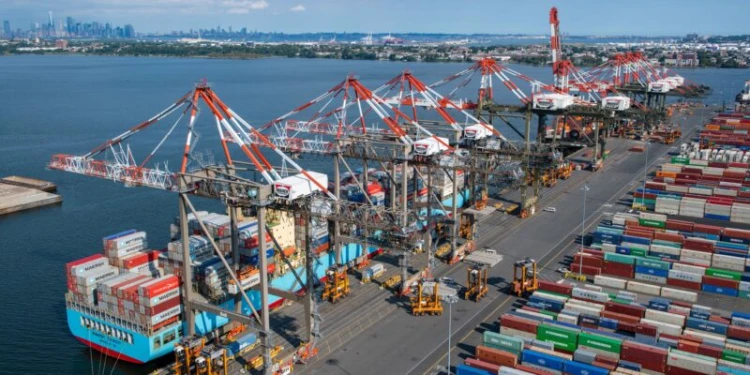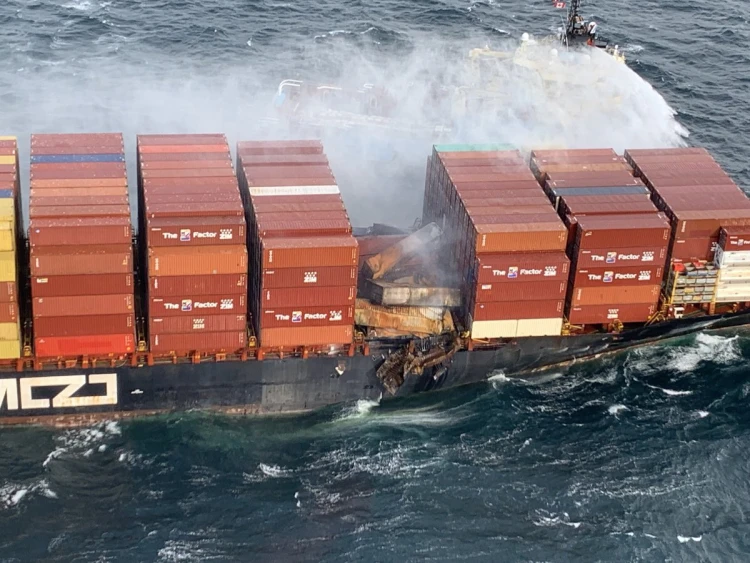Container ship
Wednesday, 03 May 2023
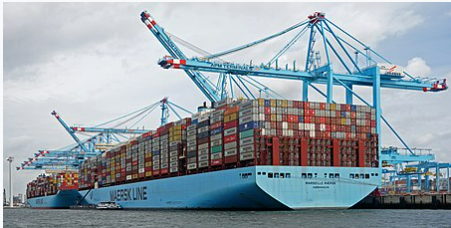
A container ship (also called boxship or spelled containership) is a cargo ship that carries all of its load in truck-size intermodal containers, in a technique called containerization. Container ships are a common means of commercial intermodal freight transport and now carry most seagoing non-bulk cargo.
Container ship capacity is measured in twenty-foot equivalent units (TEU). Typical loads are a mix of 20-foot (1-TEU) and 40-foot (2-TEU) ISO-standard containers, with the latter predominant.
Today, about 90% of non-bulk cargo worldwide is transported by container ships, and the largest modern container ships can carry up to 24,000 TEU (e.g., Ever Ace). Container ships now rival crude oil tankers and bulk carriers as the largest commercial seaborne vessels.
MORE NEWS : Maersk partners with Cozero to enhance emission visibility for international E-commerce
There are two main types of dry cargo: bulk cargo and break bulk cargo. Bulk cargoes, like grain or coal, are transported unpackaged in the hull of the ship, generally in large volume.[3] Break-bulk cargoes, on the other hand, are transported in packages, and are generally manufactured goods.[4] Before the advent of containerization in the 1950s, break-bulk items were loaded, lashed, unlashed and unloaded from the ship one piece at a time. However, by grouping cargo into containers, 1,000 to 3,000 cubic feet (28 to 85 m3) of cargo, or up to about 64,000 pounds (29,000 kg), is moved at once and each container is secured to the ship once in a standardized way.[5] Containerization has increased the efficiency of moving traditional break-bulk cargoes significantly, reducing shipping time by 84% and costs by 35%.[6] In 2001, more than 90% of world trade in non-bulk goods was transported in ISO containers.[7] In 2009, almost one quarter of the world's dry cargo was shipped by container, an estimated 125 million TEU or 1.19 billion tonnes worth of cargo.[8]
The first ships designed to carry standardized load units were used in the late 18th century in England. In 1766 James Brindley designed the box boat "Starvationer" with 10 wooden containers, to transport coal from Worsley Delph to Manchester via the Bridgewater Canal.[9] Before the Second World War, the first container ships were used to carry the baggage of the luxury passenger train from London to Paris (Southern Railway's Golden Arrow / La Flèche d'Or). These containers were loaded in London or Paris, and carried to ports of Dover or Calais on flat cars.[10] In February 1931, the first container ship in the world was launched; the Autocarrier, owned by Southern Railway UK. It had 21 slots for containers of Southern Railway.[9][11]
The earliest container ships after the Second World War were converted oil tankers, built up from surplus T2 tankers after World War II. In 1951, the first purpose-built container vessels began operating in Denmark, and between Seattle and Alaska. The first commercially successful container ship was Ideal X,[12] a T2 tanker, owned by Malcom McLean, which carried 58 metal containers between Newark, New Jersey and Houston, Texas, on its first voyage.[13] In 1955, McLean built his company, McLean Trucking into one of the United States' biggest freighter fleets. In 1955, he purchased the small Pan Atlantic Steamship Company from Waterman Steamship and adapted its ships to carry cargo in large uniform metal containers.[14] On April 26, 1956, the first of these rebuilt container vessels, Ideal X, left the Port Newark in New Jersey and a new revolution in modern shipping resulted.[15][16]
MV Kooringa was the world's first fully cellular purpose-built container ship and was built by Australian company, Associated Steamships Pty. Ltd. in partnership with McIlwraith, McEacharn & Co and commissioned in May 1964.
Container vessels eliminate the individual hatches, holds and dividers of the traditional general cargo vessels. The hull of a typical container ship is a huge warehouse divided into cells by vertical guide rails. These cells are designed to hold cargo in pre-packed units – containers. Shipping containers are usually made of steel, but other materials like aluminum, fiberglass or plywood are also used. They are designed to be entirely transferred to and from smaller coastal carriers, trains, trucks or semi-trailers (and so are carried by different modes of transport during one voyage, thus giving the name intermodal transport). There are several types of containers and they are categorized according to their size and functions.
Today, about 90% of non-bulk cargo worldwide is transported by container, and modern container ships can carry over 24,000 TEU. As a class, container ships now rival crude oil tankers and bulk carriers as the largest commercial vessels on the ocean.
Although containerization caused a revolution in the world of shipping, its introduction was not easy. Ports, railway (railroad in the US) companies, and shippers were concerned about the huge costs of developing the ports and railway infrastructure needed to handle container ships, and for the movement of containers on land by rail and road. Trade unions were concerned about massive job loss among port and dock workers at ports, as containers were sure to eliminate several manual jobs of cargo handling. It took ten years of legal battles before container ships would be pressed into international service. In 1966, a container liner service from the US to the Dutch city of Rotterdam commenced. Containerization changed not only the face of shipping, but it also revolutionized world trade. A container ship can be loaded and unloaded in a few hours compared to days in a traditional cargo vessel. This, besides cutting labor costs, has greatly reduced shipping times between ports; for example, it takes a few weeks instead of months for a consignment to be delivered from India to Europe and vice versa. It has resulted in less breakage due to less handling; also, there is less danger of cargo shifting during a voyage. As containers are sealed and only opened at the destination, theft has been greatly reduced.
MORE NEWS : MSC Partners with Valencia to Expand Med’s Busiest Container Port
Containerization has lowered shipping expense and decreased shipping time, and this has in turn helped the growth of international trade. Cargo that once arrived in cartons, crates, bales, barrels or bags now comes in factory sealed containers, with no indication to the human eye of their contents, except for a product code that machines can scan and computers trace. This system of tracking has been so exact that a two-week voyage can be timed for arrival with an accuracy of under fifteen minutes. It has resulted in such revolutions as on time guaranteed delivery and just in time manufacturing. Raw materials arrive from factories in sealed containers less than an hour before they are required in manufacture, resulting in reduced inventory expense.
Exporters load merchandise in boxes that are provided by the shipping companies. They are then delivered to the docks by road, rail or a combination of both for loading onto container ships. Prior to containerization, huge gangs of men would spend hours fitting various items of cargo into different holds. Today, cranes, installed either on the pier or on the ship, are used to place containers on board the ship. When the hull has been fully loaded, additional containers are stacked on the deck.
Today's largest container ships measure 400 metres (1,300 ft) in length.[17] They carry loads equal to the cargo-carrying capacity of sixteen to seventeen pre-World War II freighter ships.
Source :https://en.m.wikipedia.org
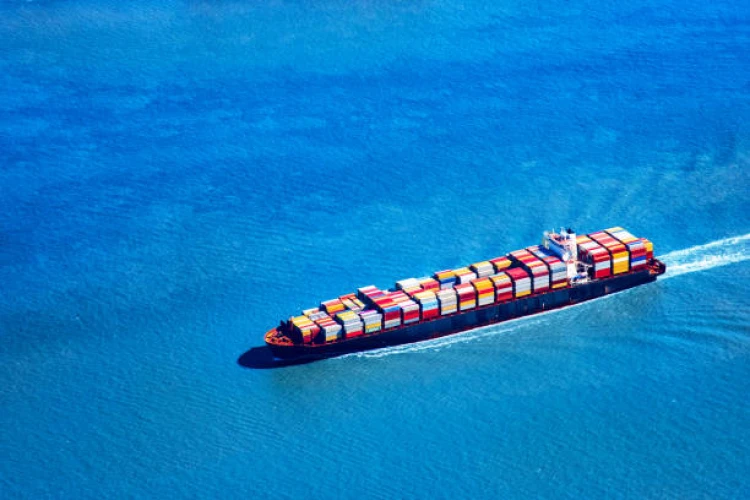
06 January 2025
Hurricane Beryl trims cargo volumes in Houston and New Orleans
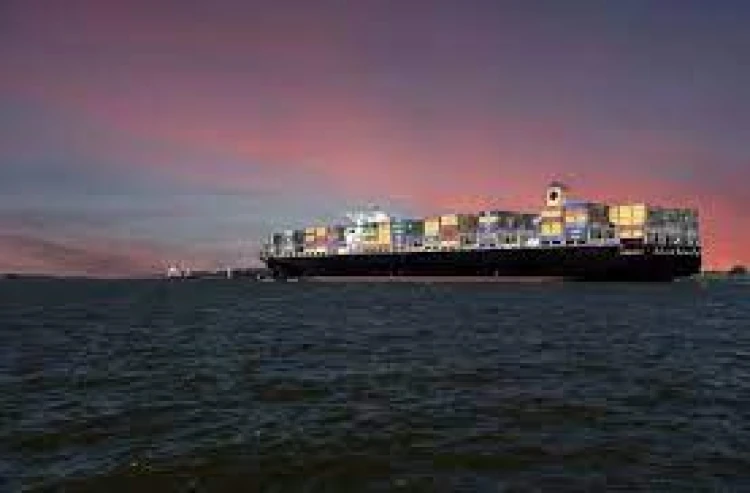
25 January 2025
Container freight rates tumble

08 February 2025
